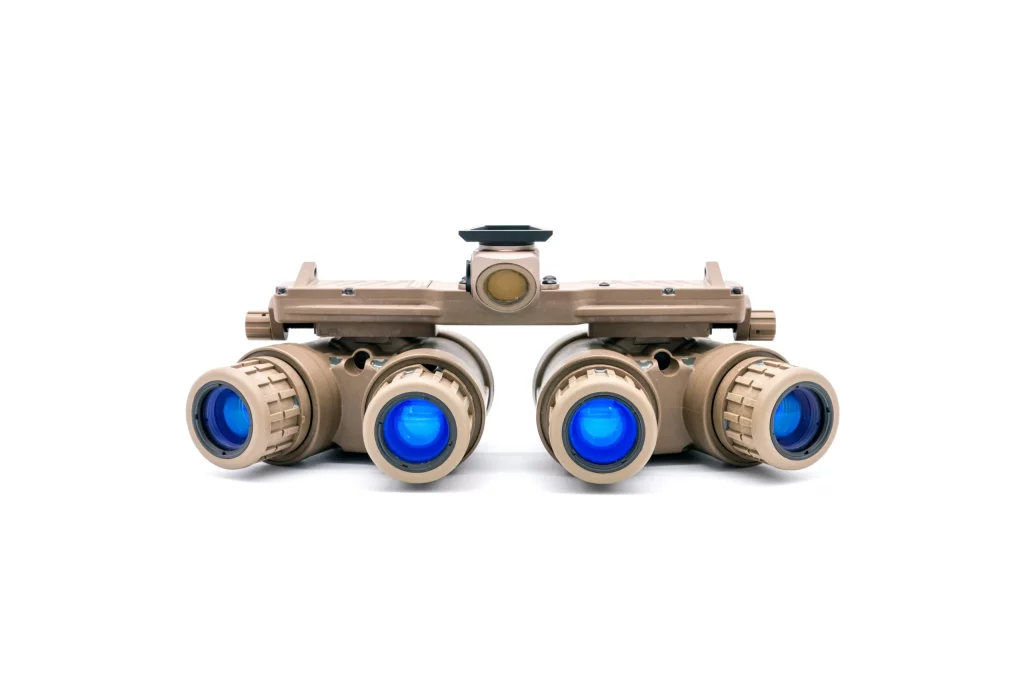Night vision goggles, a remarkable blend of optics, physics, and electronics, have long been a subject of intrigue for many. Not just confined to spy films or military operations, these devices have entered the realm of consumer electronics as well. This detailed post will delve into the fascinating world of night vision technology, explaining how do night vision goggles work and what’s the secret behind these goggles.
Night Vision Technology: An Introduction

Night vision technology helps human eyes conquer the darkness. Initially developed for military use during World War II, these devices amplify the limited light available in dark environments to produce a clear, bright image. Night vision can operate in two ways: thermal imaging and light amplification.
Light Amplification
Light amplification is the most common method used in night vision goggles. These devices amplify existing light—such as moonlight, starlight, or the infrared light that all living organisms emit—to create an image.
Thermal Imaging
Thermal imaging captures the upper portion of the infrared light spectrum emitted as heat by objects instead of reflecting as light. Hotter objects emit more of this light than cooler ones, and this difference creates a detailed temperature map.
The Inner Workings of Night Vision Goggles
Night vision goggles using light amplification technology consist of several key components, each playing a pivotal role in enabling vision in the dark.
Read more about sunglasses.
Objective Lens
The journey of transforming minuscule light particles into a visible image starts with the objective lens. This lens captures ambient light and infrared light around you. The objective lens focuses this light onto the image intensifier tube.
Image Intensifier Tube
The heart of a night vision device is the image intensifier tube. Here’s a step-by-step look at the process inside this critical component:
- Photocathode: The image intensifier tube begins with a photocathode. When the photons of light, even from a very dim source, hit the photocathode, it releases electrons due to the photoelectric effect.
- Microchannel Plate (MCP): The released electrons then enter the microchannel plate. This component has millions of microscopic tubes (channels) that each function as an electron multiplier. As electrons pass through these channels, they cause a chain reaction, releasing multiple electrons for each one that enters.
- Phosphor Screen: The multiplied electrons then strike the phosphor screen. Just like in old CRT television screens, when these electrons hit the phosphor screen, they emit photons, creating a green-hued image. Green is used because the human eye is most sensitive to this color and can distinguish more shades of it than any other color.
Eyepiece
The bright image produced on the phosphor screen then exits the goggles through the eyepiece, where it can be focused to the viewer’s comfort. The end result is a clearer, brighter, amplified image even in near-total darkness.
The Role of Infrared Illuminators
In certain conditions when there isn’t enough ambient light for the goggles to work effectively, an infrared illuminator can be used. Infrared illuminators work like flashlights for night vision goggles, emitting light in the infrared spectrum, invisible to the naked eye but detectable by the night vision device. This infrared light can illuminate the scene without alerting anyone or any animal to the presence of light, making it incredibly useful for wildlife observation or covert operations.
Understanding Generations of Night Vision Technology
Since its inception, night vision technology has been classified into various generations (Gen 0 to Gen 4), each representing significant technological advancements and improved performance.
- Gen 0: The earliest night vision devices, used actively during World War II and the Korean War.
- Gen 1: Introduced in the Vietnam War, offering improved performance and reliability.
- Gen 2: Introduced a microchannel plate for better image resolution and brightness.
- Gen 3: Further improved image resolution and brightness with the addition of gallium arsenide to the photocathode and a protective ion barrier film on the MCP.
- Gen 4: Represents the highest quality in night vision technology, with significant improvements in performance over Gen 3, including better image resolution, light amplification, and overall device lifespan.
The Future of Night Vision Technology
The night vision technology industry continues to evolve, with advancements in fields like nanotechnology, sensor fusion, and color night vision expected to further revolutionize it. Researchers are even working on methods to mimic the night vision capabilities found in certain species of animals, which could open new horizons for this incredible technology.
In conclusion, the science behind night vision goggles, while complex, is a fascinating study of optics, electronics, and our understanding of light and vision. As we continue to push the boundaries of night vision technology, who knows what fascinating new developments the future may hold?



Recent Comments